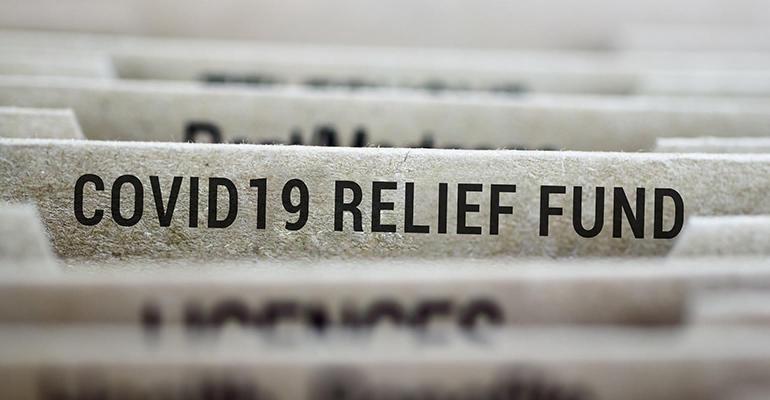The National Restaurant Association released a Restaurant Revitalization Fund FAQ Friday divulging more information on grant eligibility, timeline, and fund distribution for restaurant operators.
The Restaurant Revitalization Fund was passed as part of the American Rescue Plan signed into law by President Biden on March 11. Although the Small Business administration has not yet released official guidance for the application process, they are expected to begin taking applications by the end of the month.
Here are some important updates about the RRF, as detailed in the FAQ published by the National Restaurant Association. The FAQs will be updated as the SBA releases its final regulatory decisions.
The minimum grant award may be set at $1,000
While the Paycheck Protection Program was often criticized because some small business loan recipients received miniscule amounts, the SBA has tried to correct this and will likely be creating a minimum amount of $1,000 with a maximum of $5 million per location and $10 million for a total entity.
The covered period may extend through March 2023
Right now, an eligible entity can use grant funds for eligible expenses incurred from Feb. 15, 2020 until Dec. 31, 2021, but that period may be extended for 14 months through March 11, 2023 as the industry still reels in recovery. The SBA currently has the authority to extend the program by two years.
Nonprofit organizations, inns, breweries, bakeries and wineries might have limited eligibility
Inns, breweries, bakeries and wineries may have to prove that they had onsite food and beverage sales of at least 33% (likely in 2019) and they may need to share filed Tax and Trade Bureau reports for their gross receipts over that period.
Although still not certain, the National Restaurant Association believes that nonprofit organization are ineligible at this time.
Permanently closed and bankrupt businesses without reorganization plans are ineligible
If an entity is permanently closed; if they have filed for Chapter 7 bankruptcy or are liquidating under Chapter 11 bankruptcy; or if they filed for bankruptcy under Chapter 11, 12, or 13 and currently do not have a reorganization plan in place, they are ineligible.
Other disqualifications include owning more than 20 locations (even if they are under different names), being a publicly traded company, or having a pending Shuttered Venues Operations Grant.
There is a specific formula for calculating grant funds
In general, the formula for grant funds is :[Eligible Expenses Incurred] – [Gross Receipts] – [PPP Loans] = grant fund.
But for businesses opened in 2019 it is [Average monthly gross receipts of 2019 multiplied by 12] – [Average monthly gross receipts of 2020 multiplied by 12] – [Total amount received in PPP loans (1st and 2nd Draw)] = grant fund.
For businesses opened in 2020 and 2021 the formula is: [Eligible expenses] – [Gross receipts received] – [Total amount received in PPP loans (1st and 2nd Draw)] = grant fund
Franchisee applicants must meet specific criteria
The “franchisee or licensee [must have] the right to profit from its efforts and bears the risk of loss commensurate with ownership.” The franchisor as affiliated business must have “an equity or right to profit distributions of not less than 50% in the RRFG applicant.”
Franchisees of publicly traded franchisors are still eligible as long as the franchisee itself is not publicly traded.
Applicants need specific documents on hand
Documents needed for the application included:
- Gross receipts for 2019 and 2020 for applicants in operation before Jan. 1, 2019.
- Gross receipts for 2019 and 2020 for applicants in operation through part of 2019.
- Documentation of gross receipts and eligible expenses must be supplied by applicants that began operations on or between Jan.1, 2020 and March 10, 2021 and applicants that have not yet opened as of March 11, 2021, but have incurred eligible expenses, for the time of operation.
Allowable documents to prove gross receipts include:
- Business tax returns (IRS Form 1120 or IRS 1120-S)
- IRS Forms 1040 Schedule C; IRS Forms 1040 Schedule F
- For a partnership: partnership’s IRS Form 1065 (including K-1s)
- Bank statements
- Externally or internally prepared financial statements such as income statements or
- Profit and Loss Statements
- Point of sale report(s), including IRS Form 1099-K
For more, read Restaurant Revitalization Fund grant minimums could be $1,000 and aid might extend to 2023.
Contact Joanna at [email protected]





